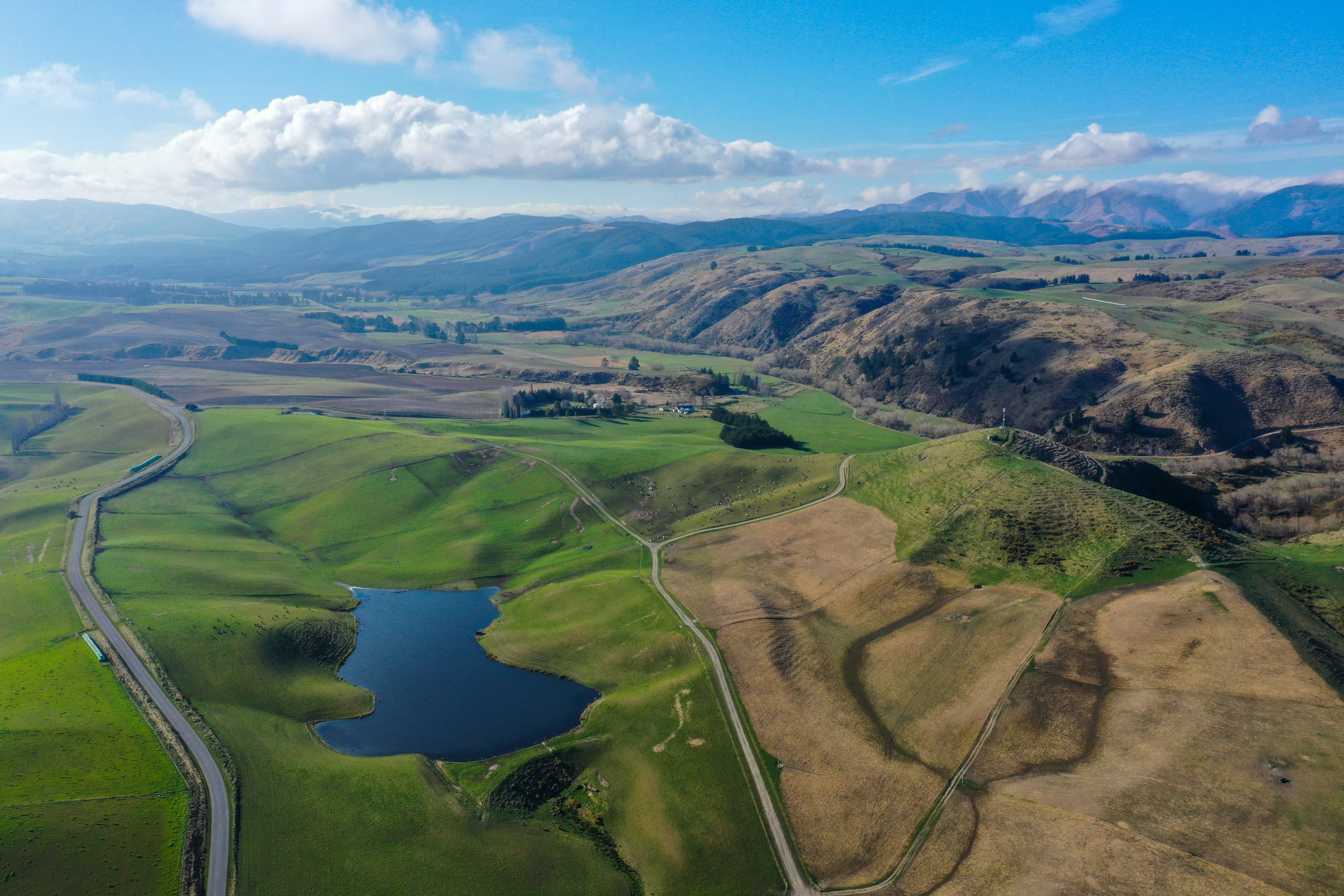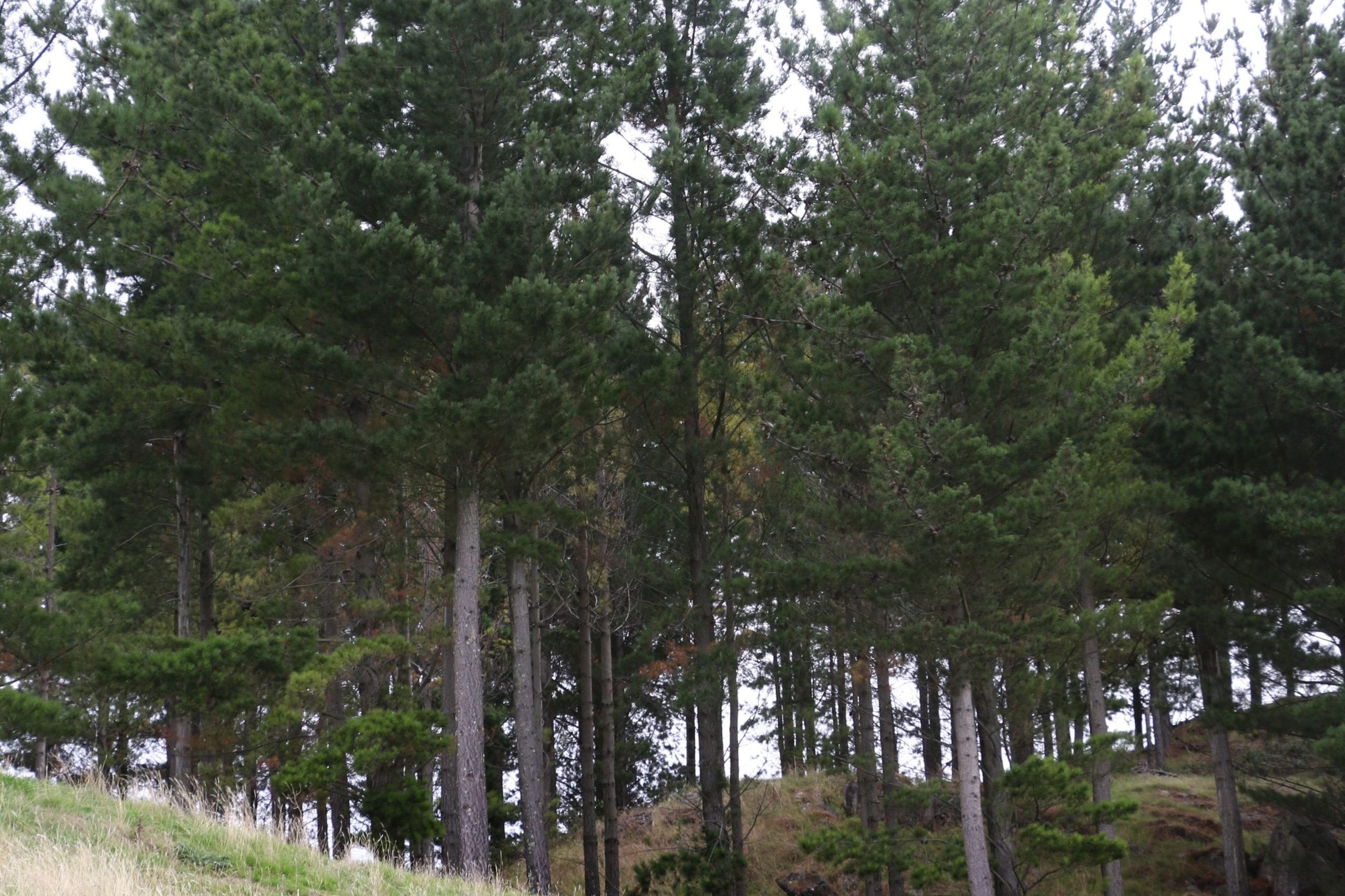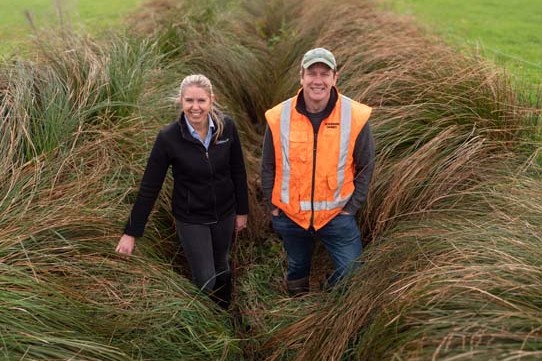Anne Hardie
Gorse-fringed streams were the only water source for the herd when Murray and Tanya Frost bought their Marlborough Sounds farm seven years ago. Combined with browntop pasture, rushes and scrubby hillsides, it presented a challenge they could really sink their teeth into.
It came with a herd of 240 cows producing 80,000kg milksolids (MS), but since adding water systems and 50 troughs, regrassing the majority of the farm and a host of other improvements, they will reach 180,000kg MS this season from 415 cows with scope to make it to 200,000kg MS from 450 cows as they buy more Fonterra shares.
The Frosts have always been up for a challenge, beginning with their early farming venture on a small sheep, beef and deer farm in the Rai Valley near Nelson that they supplemented with fencing, shearing and town jobs. They’d never milked a cow when they bought their first dairy farm, but at the time that was a more affordable option than a larger sheep and beef property.
“That was 2005-2006 when dairy was on a bit of a low, sheep was really high and the bank suggested we look at a dairy farm,” Murray says.
Back then they bought a West Coast dairy farm still in its development stage with Pakihi soils they flipped, before selling it in 2012 to buy their Marlborough farm which lies on the edge of the Mahau Sound at Linkwater. The 263-hectare property – 180 effective – is flanked by Department of Conservation hills and flows down to the bay, with hunting in the bush and a boat ramp into the sounds just a short drive away.
When they arrived on the farm in June 2012, their first job was to bring in a digger to lay cables and get power to the fences so they could simply keep the cows within paddocks instead of wandering wherever they liked.
Three water systems followed for stock water, the dairy and irrigation, plus 50 new troughs to get water to those paddocks. Until then, cows had relied largely on streams often overgrown with gorse or willows, or a few troughs that filled slowly from the streams. In that first year they had to mow some of the paddocks for hay because there was no water for the cows.
In the ensuing years they have fenced 5km of waterways around the farm using second-hand vineyard posts that cost a box of beer for a trailer load, then planted the strips with trees grown by Murray’s now 83-year-old father, Rex.
“He grows a mix of natives and comes over and potters around the farm planting them,” Tanya says. “Planting is ongoing and at the right time of year, he is here planting. Now we’re looking at what to plant near the estuary that handles the salt.”
Numerous culverts have been added, including under the main laneway where cows used to trudge through streams and the effluent from the dairy has had a major upgrade. It now passes through a GA Slope Screen solid separator before the liquid flows to the pond which has been enlarged to 2.6 million litres and lined with a Viking plastic liner.
A stirrer has yet to be added as the bulk of their development work has been covered by income rather than borrowed money and to date the effluent system has cost $200,000. They kicked off the effluent project last February when the ground was dry and the size of the pond will enable them to store as much effluent as possible to use for irrigation through summer.
Compliance only required a one million litre pond, but the extra liquid will be invaluable through summer. The pond is the latest addition to their irrigation scheme which began with water flow tests, drilling and consents for the bore, then adding the next step as income allowed.
All up they will now be able to irrigate about 70ha, which is a third of the farm, through K-line pods with water sourced from a 22m bore. It means they will finally be able to get rid of the travelling irrigator which Murray says is no longer an acceptable piece of equipment in today’s dairying.
The farm gets a decent 1600mm of rain a year, but they can also just about guarantee a six-week dry spell and the soils they are irrigating dry out faster than the heavier soils at the top of the valley.
The sizeable effluent pond gives them surety they can get water onto some paddocks when summer dries up. Though they will still switch from twice-a-day milking to three-in-two in summer, depending on the season, then once-a-day toward the end of the season to put condition on the cows before winter.
Irrigation is only part of the equation to summer feed and it’s the new improved pasture that adds a significant boost to production. The better part of the farm is divided into 60 3ha paddocks and only five have yet to be re-grassed, with two of those in crop this season and most cropped twice to get rid of the browntop.
“Because of the browntop you have to crop twice to break it down,” Murray says. “And cropping it twice gives you more opportunity to spray the weeds out. Most of the crops we use for winter grazing then go into maize if it’s flat enough, for maize silage.”
The herd remains on the farm through winter and this year grazed through 11ha of kale and 6ha of rape as part of that pasture renewal programme. It’s worked well to date because they needed to renew pasture, but they are searching for a second support block so they can reduce winter cropping in the future and winter part of the herd off the milking platform.
Through regrassing, the paddocks have been drilled with Excess ryegrass at 20kg/ha, while white clover, chicory and plantain has been broadcast in the mix at 4kg/ha. The Frosts carry out all the preparation work themselves on the paddocks and are fortunate to have a local contractor at Linkwater who then does the drilling, plus silage and balage on the farm and support block.
For summer, they plant 3ha of chicory and 6ha of Barkant turnips and this year they are trialling 3ha of raphno which will be irrigated and break-fed to the cows after one of their milkings each day.
“We like irrigated chicory but the ducks (Paradise) love it as well. If the raphno works we won’t do chicory any more. And we will see how the raphno goes before deciding whether to leave it for winter or regrass it in autumn.”
Beyond the regrassed paddocks is a further 10ha of rough grazing, with much of it root-raked from sprayed scrub in the past and another 20ha is yet to be cleared and brought into grass. It’s the final area to be developed and will provide further grazing for the cows in winter plus some of the other stock they carry such as 20 carry-over cows, a few bulls and beefies, plus 100 heifer calves.
The herd came with the farm, though they found grazing for 40 of their own heifers to add to the herd the next year. Since then the Frosts have been breeding and selecting their ideal cow for the farm which is a three-quarter Friesian cross Jersey and they have been synchronising and artificially inseminating (AI) heifers for about a quarter of their replacements to fine tune the herd faster.
This year they have kept 120 calves from the herd including 112 replacement heifers, four Murray Grey-cross bull calves which will reduce the risk of Mycoplasma bovis from buying in bulls, plus a few steers. Back in their first season on the farm they only reared 50 calves, partly due to fewer cows and also a shortage of replacements when they couldn’t afford to employ staff.
Today they employ two full-time staff, but back then it was just them and their two kids, Troy who was 10 at the time and his younger eight-year-old sister, Sophie.
“They reared the calves with me before school and when they got home from school because we couldn’t employ staff,” Tanya says. “We couldn’t have done it without the whole family.”
They’ve used predominantly Friesian bulls for their AI and that has given them added income with four-day-old Friesian bull calves selling for $125, while beef-cross bull calves sell for $175 and beef-cross heifers for $130. The beef cross are the result of using Hereford semen to AI the poorer-producing cows as well as beef bulls following AI. This year they will put bulls with the later-cycling cows from the first week of December through to the beginning of January and then AI with short-gestation bulls for two to three weeks to tighten the tail end of calving.
Murray says the Friesian-type cows provide a better return for their empty cows, which have ranged between eight and 15% each year and he reckons a realistic goal is about 10%. This year they carried out more metricure treatments to try and reduce the empty rate and have added a Dosatron to one of the water schemes for minerals. No matter what farmers do to reduce the empty rate, Murray says he believes the weather at mating has a huge impact on results.
Even greater than the physical challenges on the farm has been buying Fonterra shares.
They bought the farm with 79,500 shares and have increased it gradually to 157,000 shares. But as Murray and Tanya say, it’s a bit of a chicken and egg situation – you need the income to buy the shares, but need the shares to build production and income. Shares are worked out on a three-year average which doesn’t reflect the production in growth for a developing farm and then there’s the dividend which didn’t come.
“You have to have enough shares for the three-year average,” Tanya explains. “We’re in the dividend reinvestment fund which goes into shares, but last year they didn’t pay a dividend so we didn’t get shares. We’ve had to find heaps of money every year to buy 20-30,000 shares a year.”
“That’s what slowed down our development,” Murray adds.
Not that development has dawdled. They’ve built a third house on the farm for their second full-time employee and the dairy has expanded from a 24-aside herringbone with no backing gate to a 40-aside with a longer yard to hold 400 cows “at a squeeze”. Next winter they will extend the yard further to take an extra 100 cows.
Also on their list is another support block to get part of the herd off the farm through winter. They already have a 44ha block 20 minutes’ drive away near Havelock where the calves head at the beginning of July as the heifers come back to the milking platform.
Each year they cut 8ha of pit silage on the support block – and silage on the milking platform – which makes up part of their supplementary feed. Plus, they buy in one truck unit of square barley straw bales to dry the cows off and two units of medium square hay bales simply because they are easy to transport to the support block compared with the round bales they make on the farm.
Through the season palm kernel is added into the cows’ diet and last year they fed them 168 tonnes in a trailer when they left the dairy. It will probably be slightly more this year to cater for a second trailer because they realised the one trailer was not long enough to give all the cows a chance of getting a feed.
By the end of October this year they were 12% ahead of last year’s production which they attribute to a range of factors including improved herd and soil fertility. Two years ago they soil tested the entire farm and they will repeat that next winter.
The farm has been a challenge, but as Tanya says: “That’s why we bought it.” Though she is also emphatic that this is their last dairy farm and they aren’t going anywhere or looking for new challenges to tackle.
FARM FACTS
Farm Owners: Murray and Tanya Frost
Location: Linkwater, Marlborough
Area: 263ha (180 effective)
Production: Target 180,000kg MS from 415 crossbred cows





